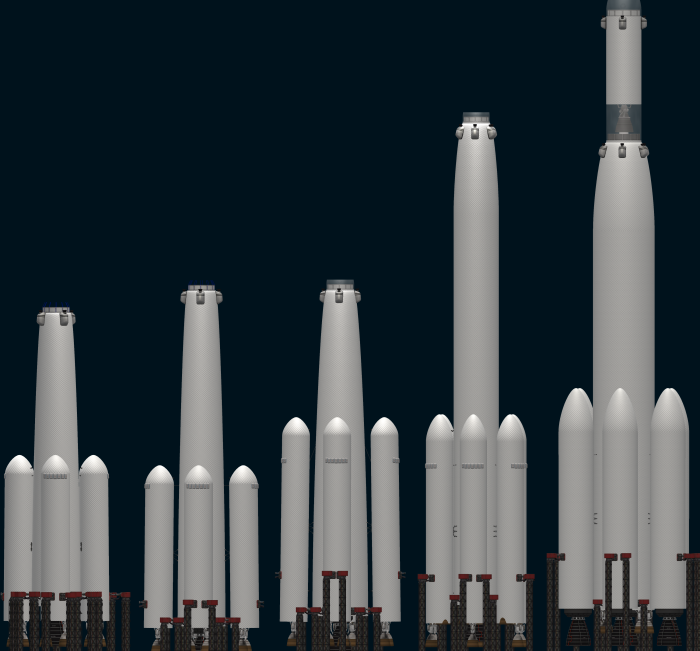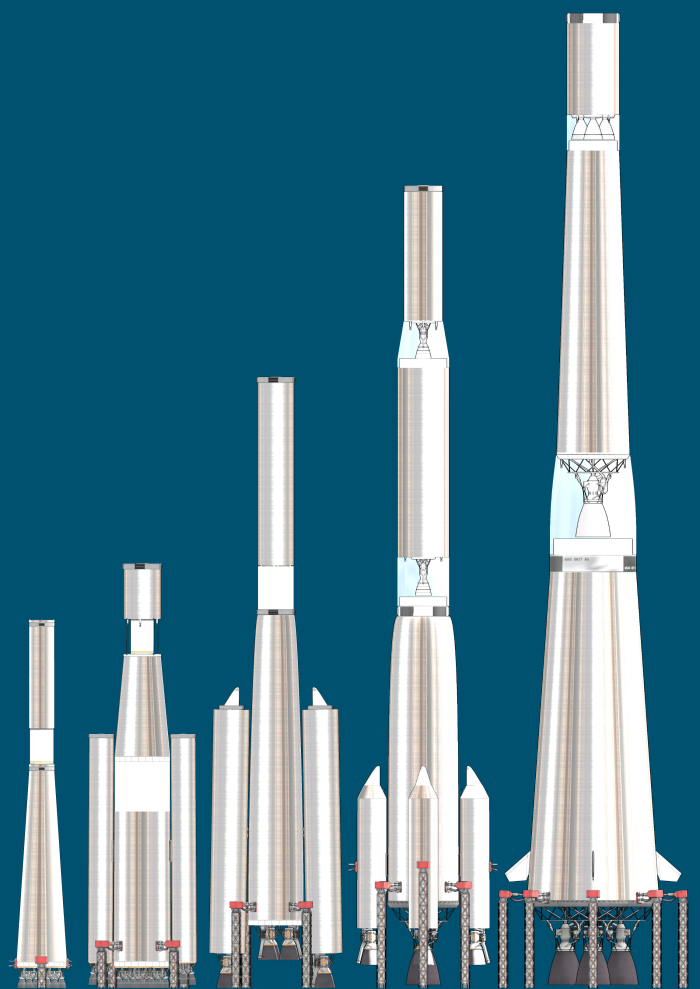August 15th, 1963; Baikonur Kosmodrone.
“Welcome everyone to this press conference, especially to our dear Minster of Information and Truth”, Gene began the conference, pointing to the official government delegation at the stage.
“First I would like to introduce today’s topic, that Kerbinia is in no way behind on the space race. As we saw a few days ago, the Illyriens have sent a ship to Mars, and are there first. Let me iterate that we got the the Moon first, and got to another planet, namely Venus, first”.
“In fact, when looking at the Illyrien craft Dawnthreader, it is very similar to our Discoverer craft, the Discoverer seems to be a bit larger on crew space, and only have a heat-shield for its re-entry pod. In fact, in half a year, an updated Discoverer will leave on an extended journey to visit both Venus and Mars in the same trip before returning to Earth”.
“The Discoverer missions are not our Mars programme though, to give you an overview of this, I would like to welcome Wernher to the stage to present our KERMIT programme, which is also already under construction for the next Mars launch window”.
As Gene turns to the side, Wernher enters the stage and takes the podium, going straight to his presentation immediately, “The Kerbinian Earth Return Mars Intercept Transfer vehicle is the Kerbinian Mars transit system starting from the next launch window to Mars”.

“What you see here is the main ship intended for the planned regular schedule, and yes, the plan is regular. The long-term plan is to have two KERMIT vessels cycling between Earth and Mars, providing crew transfer windows every transfer window”.
“The first KERMIT vessel do have an added feature in the form of an emergency escape-pod, but otherwise future flights are intended to propulsive capture back into Earth orbit where a pod will be sent up to change crews. This pod adds a substantial weight, as it is not only designed to be able to re-enter Earths atmosphere at full speed, but is also designed to separate and manoeuvrer earlier, to allow a failing KERMIT-1 to not enter the atmosphere at all, but be ejected away”.
“This also necessitates a larger than usual fuel resupply vessel in Mars orbit, which we’re handling by using a sister-ship to the KERMIT, delivering a large fuel load and also returning. Future refuelling will likely be handled by a disposable refueller also aerobraking at Mars – but the drive section of the initial refueller will be re-used for the KERMIT-2”.
“Speaking of re-use, the KERMITs are rated for up to 10 return trips, before the drive-section has to be replaced. The main section does not have a currently expected end of life, but will be evaluated on an ongoing basis”.
“With 3 advanced nuclear engines, and a full 10 of our new and updated ION engines, the ship has a great amount of capability. The nuclear engines gets the KERMIT into and out of orbit, with the ION engines providing extended burns in transit, and possibly minor orbital corrections – but they do take very long to do this, so it is only likely to be done when back at Earth, when it have months to complete a manoeuvrer”.
“The Mars transit itself require a very large amount of fuel though, and for this, the KERMITs are fitted with 4 drop-tanks of liquid hydrogen”.

“These drop-tanks are jettisoned two at a time, after executing the two serial burns needed for the initial Mars injection. After that, the KERMIT proceeds with full tanks towards Mars, completing an extended burn with the ION engines, before using the nuclear engines again to capture at Mars. The ION engines are supplied by the nuclear reactors, with life support mainly drawing power from the solar panels”.
“At Mars, the tanker tops up the KERMIT, while it docks with the Mars Station One, readying it for the return trip. All in all, the components of the KERMIT-1 is the Drive Section, Hab section and Emergency pod”.
“As the KERMIT is ready in Earth orbit, it is a nearly 400 T vessel – so we will be using our new Proton-B series of rockets extensively for the launches and future resupplies of the KERMIT vessels when in Earth orbit”.
As Wernher finishes, Gene joins him at the podium, explaining further “now, the KERMIT-1 will go to Mars and oversee final assembly of the Mars Station One. There it will deliver an experienced station crew from the KSS, while the command crew returns the KERMIT-1 to Earth. Yes, the ship supports cycling of 6 crew at a time”.
“The KERMIT-2 will be accompanied by exploration vessels to have crew visit the Martian moons, and we are currently developing a crewed lander as well to accompany this mission, beyond possible unmanned landers that the crew there can land at specific sites to explore further – and in the future, we are considering small outposts to allow landed crew to stay at the surface for extended periods of time”.
“Now, as we wrap up, are there any questions”, Gene asks the assembled reporters, who are all looking wide-eyes, much to the delight of the Minister of IT present on the stage.








